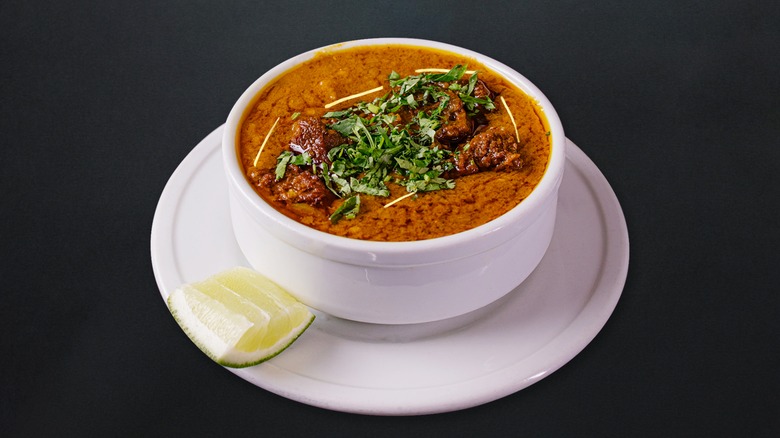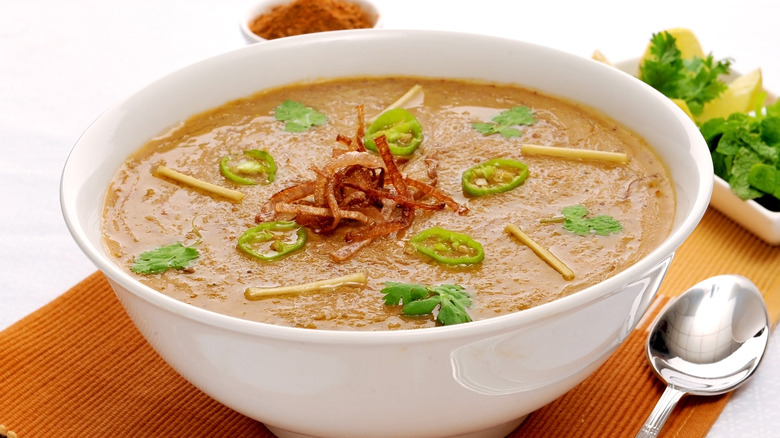Haleem Is The Traditional Pakistani Dish That Breaks The Ramadan Fast
When Ramadan approaches, Muslims all over the world gear up for the month-long celebration of their faith. The ninth month in the Islamic calendar, Ramadan is a time of prayer and fasting. Every day, everyone above puberty refrains from eating from dawn until dusk for the full 30 days, which means there are plenty of hungry worshippers by the time night comes around. In Pakistan, there are no dishes more popular to break this fast than Haleem.
Haleem is relatively unique among foods in that it doesn't fit easily into any one category but sits right on the border between a stew and a porridge. It's traditionally made with either goat or mutton mixed with lentils, wheat, ghee, basmati rice, and a generous array of spices including rose petals and cinnamon. Good haleem can take as long as 24 hours to make, which means many people will go to specialty haleem restaurants for their nighttime cup. The recipe will change from chef to chef, of course, and the most successful haleem restaurants keep some aspects of their recipe a trade secret.
If you've never tried haleem before, it can be tricky to describe the taste. Aesthetically it could be somewhat off-putting since it has a pale brown color and thick, goopy consistency, but if you push through any initial hesitation, you'll discover why Pakistanis consider this aromatic dish one of their most cherished traditional recipes.
A holy stew
Haleem traces its origin story to Iran, where a dish known as harees has been enjoyed for centuries. Around the 17th century, harees made its way to India, but many Indians found it somewhat bland for their taste. By adding plenty of spices to the dish (alongside other tweaks geared around local ingredients), hareem was born. When India and Pakistan separated in 1947, the Muslim Indians who fled to Pakistan brought hareem with them. Because it is so rich in protein and nutrients, it makes for the perfect food during the spiritually and physically demanding month of Ramadan.
While Ramadan is celebrated by Muslims all around the world, each country has its own unique dish associated with the season. For example, in Morocco they eat a somewhat similar dish known as Harira, which uses chickpeas and tomatoes. The common trend is that these dishes tend to be very filling, giving fasting Muslims the energy they need. In the United States, many Muslims enjoy bean pie for their meal. Although haleem is most popular among Pakistani Muslims during Ramadan, it's not so exclusive that non-Muslims aren't allowed to eat it up; haleem is enjoyed all year round by everyone. The true heroes are the chefs, who fast all day while standing over this slow-cooked feast for hours at a time.

